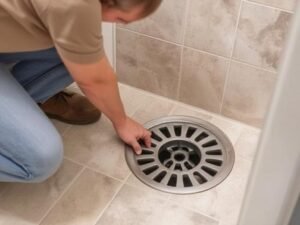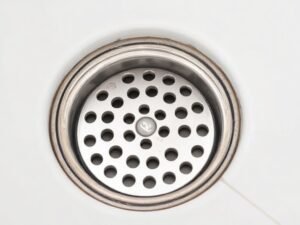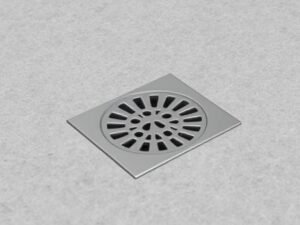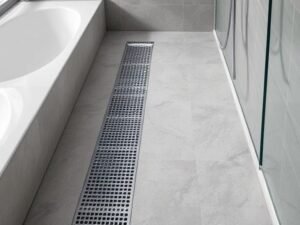Opening Paragraph
Ultra-thin shower drains have revolutionized bathroom design by enabling sleek, minimalist floors without sacrificing drainage efficiency. However, like any plumbing fixture, their longevity and performance heavily depend on proper maintenance. For wholesalers and brands catering to European customers, understanding effective upkeep practices ensures that end users enjoy trouble-free operation, prevents odor issues, and reduces after-sales service burdens.
Snippet Paragraph
Routine cleaning, timely inspections, and material-specific care are crucial to preserving ultra-thin shower drains’ functionality and aesthetics. Neglecting maintenance can lead to clogging, unpleasant odors, and material degradation.
Transition Paragraph
This guide explores comprehensive maintenance strategies designed to maximize the lifespan of ultra-thin shower drains, tailored specifically for their unique slim-profile design and materials commonly used in Europe.
1. Why Is Maintenance Important for Ultra-Thin Drains?
Ultra-thin drains feature narrow channels and low-profile grates, which can be more susceptible to blockage from hair, soap scum, and mineral deposits. Their slim design also means less margin for error in installation and maintenance, making regular care essential to prevent flow reduction and water backup.
Consistent care reduces clogging and odor problems, improving user satisfaction.
2. Recommended Cleaning Practices
-
Weekly Cleaning: Remove the grate and clear visible debris such as hair and sediment.
-
Use Mild Cleaners: Employ pH-neutral or mild detergents to avoid damaging stainless steel finishes or plastics. Avoid harsh chemicals that can corrode materials or dull surfaces.
-
Descale Periodically: In hard water regions common in Europe, mineral buildup can clog drains. Use vinegar or commercial descaling agents to dissolve deposits without harming the drain.
-
Rinse Thoroughly: After cleaning, flush the drain with warm water to clear loosened debris.
3. Inspecting for Damage and Wear
-
Check for cracks or brittleness in plastic components, which may occur due to UV exposure or aging.
-
For stainless steel drains, look for scratches or dullness indicating surface corrosion. Polishing products formulated for stainless steel can restore shine and protective layers.
-
Inspect seals and mechanical parts (if applicable) for wear or deformation to maintain odor resistance and water tightness.
4. Odor Prevention Techniques
-
Ensure water traps remain filled to block sewer gases—if a shower is unused for long periods, pour water down the drain periodically.
-
Mechanical or silicone-sealed drains require less water but should still be checked regularly for seal integrity.
-
Use mild disinfectants occasionally to eliminate bacterial buildup without damaging materials.
5. When to Call Professionals
If cleaning does not resolve slow drainage or persistent odors, plumbing professionals should investigate potential pipe blockages or leaks. Prompt intervention avoids damage to surrounding floors and structures.
Conclusion
Well-maintained ultra-thin shower drains combine aesthetic appeal with reliable performance over years of use. For brands and wholesalers, providing clear maintenance guidelines enhances customer satisfaction, lowers warranty claims, and reinforces product value in competitive European markets.







